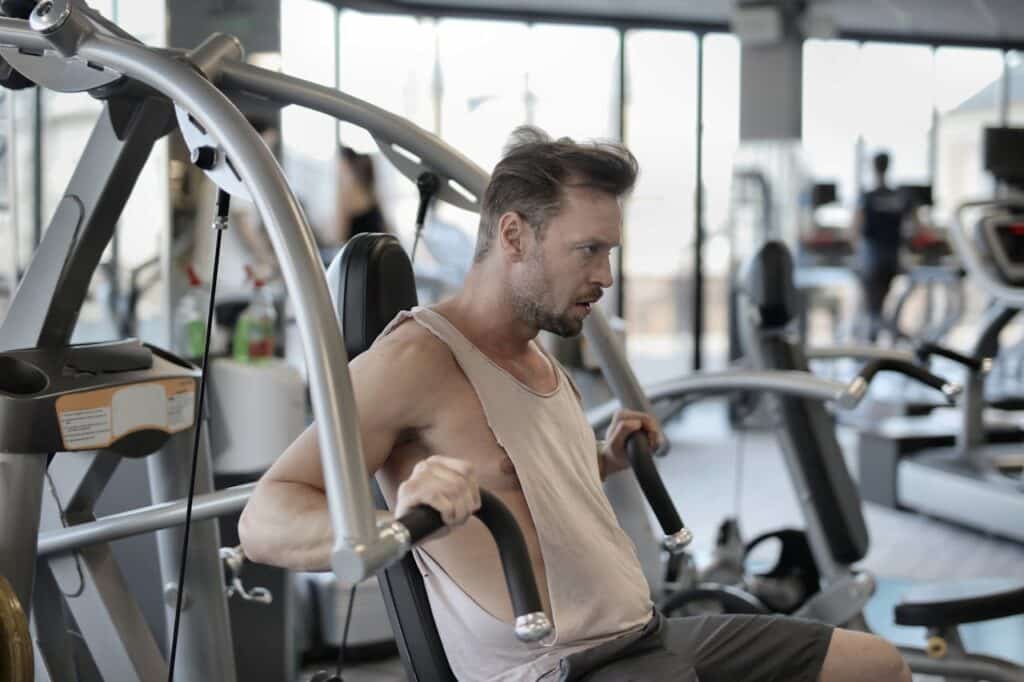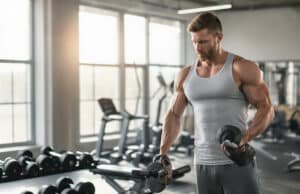When it comes to building a well-rounded upper body, focusing on a chest workout for lower chest development is often overlooked. Many Aussies hit the gym hard but don’t realise that shaping the lower chest is key to achieving that sculpted, athletic look. The lower pectorals play a crucial role in defining the bottom edge of the chest, creating that clean, strong line between your chest and abs. Whether you’re training at a local gym or making use of a 24-hour gym like EFM Glenelg, incorporating the right exercises makes a massive difference. In this article, we’ll walk you through the best 7 chest workout for lower chest gains, along with tips on structuring your sessions, fuelling your body with the right nutrition, and understanding why lower chest training truly matters. If you’re aiming to take your chest game to the next level, especially the often-neglected lower portion, you’re in the right place.
Benefits of Targeting the Lower Chest
A well-rounded chest workout for lower chest development goes beyond just aesthetics—it supports overall chest strength and function. Targeting the lower portion of your chest helps create that defined, chiseled shape many gym-goers strive for. It also balances out your upper chest and shoulders, improving your posture and reducing the risk of muscular imbalances. For Aussie fitness enthusiasts, especially those training at group fitness studios like EFM Glenelg, focusing on the lower chest can help enhance performance in push-ups, bench presses, and even contact sports. Moreover, lower chest training builds the foundation of your pectorals, giving you that “bottom shelf” chest appearance, which becomes even more noticeable when you lean down. Whether you’re lifting weights or using bodyweight exercises, targeting the lower pecs in your chest workout for lower chest gains will help you train smarter and get results faster. Ignoring it? You’re leaving serious gains on the table.
Chest Workout for Lower Chest
A dedicated chest workout for lower chest development should combine both compound and isolation movements. This balance ensures you’re hitting the muscle fibres from various angles, activating the full range of the lower pectorals. It’s not just about pressing heavy weights—using cables, bodyweight, and machines can target the lower chest effectively. Variety is key. Integrating decline angles, controlled form, and proper technique will drive better results over time. Many Aussie lifters make the mistake of sticking to flat bench press alone, but for real definition and strength, focusing on lower chest-specific moves is essential. You’ll also improve performance in other upper-body lifts and reduce shoulder strain by strengthening the lower pecs. Whether you’re training for sport, aesthetics, or general fitness, adding these top 7 exercises to your chest workout for lower chest progress will lead to noticeable gains.
1. Decline Barbell Bench Press

The decline barbell bench press is a classic and powerful chest workout for lower chest activation. By adjusting the bench to a decline angle, you shift the emphasis away from the upper pecs and shoulders and direct it toward the lower portion of your chest. This move allows for heavier loads, making it ideal for building mass. Ensure you maintain full control throughout the motion—lower the bar slowly to your lower chest and press up with intent. For those training in gyms like EFM Glenelg, where equipment is top-tier, using a decline bench setup ensures a consistent and safe lift. To maximise muscle growth, use moderate to heavy weights with 6–10 reps per set. Incorporating this into your chest workout for lower chest results will make a noticeable difference in definition and power. It’s a foundational movement you should prioritise if a fuller, more sculpted chest is your goal.
2. Decline Dumbbell Press

The decline dumbbell press takes the benefits of the barbell version and adds more range of motion and muscle activation. As a chest workout for lower chest targeting, this exercise helps correct muscle imbalances and allows a deeper stretch at the bottom of the lift. Using dumbbells requires more stability and control, which further engages the lower pectorals and supporting muscles. Lower the dumbbells slowly, allowing your elbows to drop slightly below chest level for a greater stretch, and press them back up while squeezing the chest. This move is ideal for intermediate and advanced gym-goers in Australia who want to fine-tune their lower chest development. Add this into your chest workout for lower chest variety and progression. Use moderate weights to start, ensuring proper form. Over time, as you build strength, you can increase the load for greater gains in both mass and definition.
3. Chest Dips (Weighted or Bodyweight)

Chest dips are an underrated but highly effective chest workout for lower chest strength and sculpting. Unlike tricep-focused dips, leaning slightly forward and flaring your elbows will shift the tension onto the lower chest. This bodyweight exercise is versatile—ideal for those training at home, at a park, or at a well-equipped gym like EFM Glenelg. You can perform it with just your bodyweight, or add a dip belt for resistance as you progress. Aim to go deep into the movement to fully stretch the lower pecs, then drive upward with control. For best results, perform 3–4 sets of 8–12 reps. Adding chest dips to your chest workout for lower chest programming will help create that “cut” along the bottom of your chest, especially when paired with a lean diet and consistent training. It’s an old-school favourite that still delivers serious results when done correctly.
4. Cable Crossover (Low to High Angle)

Cable crossovers using a low-to-high angle are a top-tier isolation movement in any chest workout for lower chest toning and definition. By starting the movement from below waist level and crossing the cables up and in front of your chest, you target the lower chest fibres with precision. Unlike presses, this motion eliminates triceps assistance and focuses purely on the pecs. Gyms like EFM Glenelg are often equipped with adjustable pulley stations, making it easy to dial in this movement. Keep a slight bend in your elbows and squeeze at the top of each rep. Do this slowly and with control to fully engage the lower pectorals. This is a great finisher after heavier pressing movements. Use moderate weights and perform 12–15 reps for maximum contraction. Adding this to your chest workout for lower chest definition will help round out your pecs and give them a polished, sculpted finish.
5. Decline Machine Press

The decline machine press is a reliable option for lifters looking for a chest workout for lower chest development with extra safety and support. Unlike free weights, machines allow you to control the movement more precisely, making them perfect for beginners or those recovering from shoulder issues. Sit back, adjust the seat so the handles align with your lower chest, and press in a slow, controlled manner. This move still targets the lower pecs effectively while reducing the risk of poor form. At EFM Glenelg, you’ll likely find high-quality machines that provide a smooth pressing motion, allowing you to focus purely on the muscle. Use a moderate rep range—around 10–12 reps per set—for hypertrophy. This exercise is a great way to isolate the lower chest at the end of your workout. For anyone structuring a balanced chest workout for lower chest growth, this machine press is a smart, effective choice.
6. Dumbbell Pullover

The dumbbell pullover might not seem like an obvious chest workout for lower chest activation, but it works wonders when done right. Lying flat on a bench, hold a single dumbbell over your chest, then slowly lower it behind your head, maintaining a slight bend in your elbows. This movement stretches the chest muscles deeply and engages the lower pecs as you return the weight to the starting position. It’s also great for expanding your ribcage and strengthening the lats, giving your torso a more dramatic V-shape. This classic move is often overlooked, but it adds great variety and depth to your routine. At gyms like EFM Glenelg, this can be done easily with dumbbells of various weights. Add 2–3 sets of 10–12 reps near the end of your session. When programmed properly, the dumbbell pullover enhances your chest workout for lower chest shape, depth, and muscle connectivity.
7. Incline Push-Ups (Feet Elevated)

Incline push-ups with your feet elevated are an effective bodyweight chest workout for lower chest development, perfect for home or gym training. By raising your feet on a bench or box, you angle your body so the lower chest works harder than in standard push-ups. Keep your core tight and lower your chest toward the ground, focusing on full range of motion and control. The beauty of this move is its accessibility—you don’t need fancy equipment to get solid results. That said, for those training at facilities like EFM Glenelg, adding a weighted vest can further boost resistance. Perform 3–4 sets of 12–15 reps for a strong burn and pump. This variation is perfect for finishing off your chest workout for lower chest emphasis, especially if you’re short on equipment or want to add a high-rep, high-burn finisher to your routine.
How to Structure a Lower Chest Workout
To make the most of your chest workout for lower chest growth, structuring is key. Start with heavy compound movements like the decline barbell or dumbbell press when your energy is at its peak. Follow up with isolation exercises such as the cable crossover or dumbbell pullover to fully fatigue the lower pectorals. Finish with high-rep bodyweight movements like incline push-ups or dips to get a full stretch and pump. Aim for 3–4 exercises per session, 3–4 sets each, and don’t skip warm-ups or cooldowns. Train your chest 1–2 times per week to allow proper recovery. Whether you’re training solo or in a group session at EFM Glenelg, structuring your chest workout for lower chest with progression in mind—such as gradually increasing reps, weight, or intensity—will lead to more muscle definition, strength, and visible gains over time.
Sample Lower Chest Workout Routine
Here’s a sample routine to get the most out of your chest workout for lower chest gains:
- Decline Barbell Bench Press – 4 sets of 6–8 reps
- Chest Dips (Weighted if possible) – 4 sets of 10 reps
- Decline Dumbbell Press – 3 sets of 8–10 reps
- Cable Crossover (Low to High) – 3 sets of 12–15 reps
- Incline Push-Ups (Feet Elevated) – 3 sets to failure
This workout targets the lower pecs with a mix of strength and hypertrophy-based training. Perfect for use at a gym like EFM Glenelg or adapted for home training. Repeat weekly and track your progress to ensure continual improvement. If you’re consistent, this routine will elevate your chest workout for lower chest results.
Nutrition Tips for Chest Muscle Growth
Training hard is only half the equation—nutrition fuels your chest workout for lower chest development. Prioritise protein intake (around 1.6–2.2g per kg of body weight), as it’s essential for muscle repair and growth. Pair that with complex carbs like brown rice, oats, and sweet potatoes for energy during workouts. Healthy fats from sources like avocado and olive oil support hormone levels and recovery. For Aussies training in the morning, a protein shake and banana pre-workout can be perfect. Post-workout meals should include lean protein (like chicken or fish) and carbs to replenish energy. Stay hydrated and avoid processed junk food. If you’re training at a high level, consider supplementation—whey protein, creatine, and BCAAs are solid choices. Combining proper fuel with a consistent chest workout for lower chest training will help you see and feel results faster.
Conclusion
A balanced chest means more than just big pecs—it’s about symmetry, strength, and definition. By incorporating a chest workout for lower chest focus into your weekly routine, you’ll improve your overall upper body aesthetics and performance. The seven exercises listed here offer a comprehensive mix of strength and muscle-building options that suit every level of fitness. From the gym floor of EFM Glenelg to your home garage setup, these movements will help you sculpt a powerful, defined lower chest. With the right structure, consistency, and smart nutrition, your results won’t just show—they’ll impress. Don’t leave gains on the table. Make the lower chest a priority, and you’ll quickly notice the impact both in and out of the gym.
FAQ
Train it once or twice a week as part of your overall chest workout for lower chest development.
Yes! Bodyweight movements like dips and incline push-ups can be done anywhere.
It’s very effective but not mandatory. Alternatives like dips and cable crossovers also hit the lower chest well.
Not necessarily, but protein and creatine can enhance recovery and results when paired with proper training.
With consistent training and good nutrition, you can see results in 4–6 weeks.






